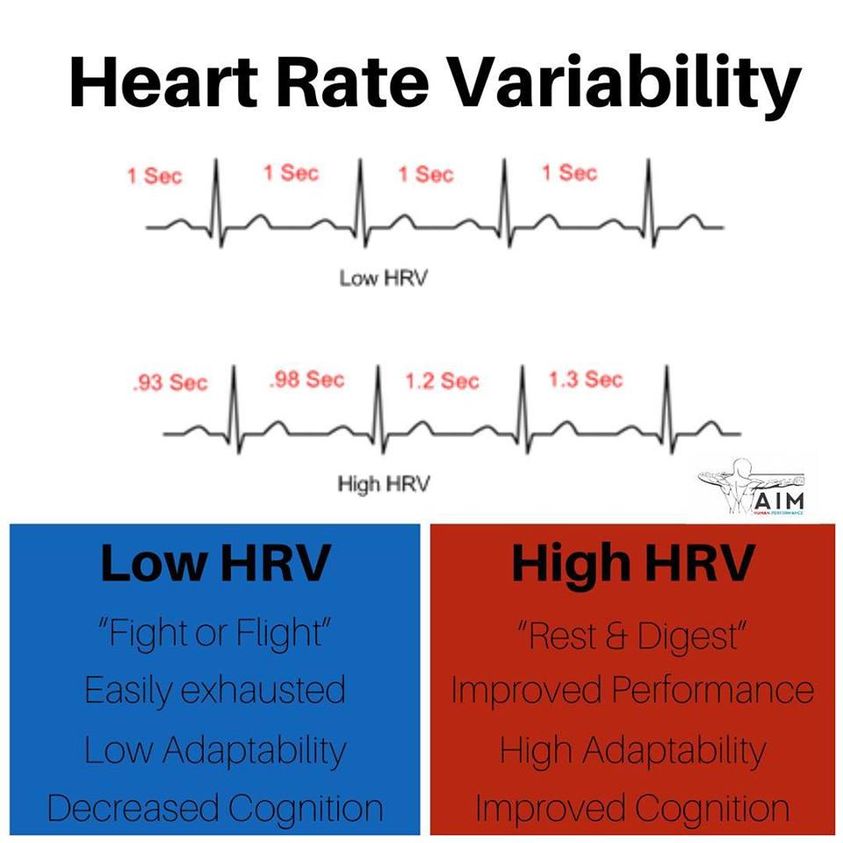What is HRV?
 Peter Richards
November 28, 2022
Peter Richards
November 28, 2022
What is HRV? (Part 1)

Historically, HRV is used as a prognostic tool, by medical professionals, to determine heart health, and mental health issues like anxiety and depression. High HRV is generally considered an indicator of a healthy heart, and higher trend-baseline HRV has been found in many studies to be associated with reduced morbidity and mortality and improved psychological well-being and quality of life.
Recovery, both physical and mental, is very important to us endurance athletes, due to training load, busy lifestyles, and we have been known to push the limits of overreaching to overtraining.
Over the last 2-decades, sports science, and sporting communities, have seen HRV as a significant recovery evaluation tool for athletes. Simply, HRV is a measure of your autonomic nervous system (ANS*) (i.e., the part of your nervous system that controls involuntary actions, such as the beating of your heart, breathing, and the widening or narrowing of your blood vessels) that can be extremely useful for evaluating your physical fitness and determining how ready your body is to physically ‘perform’. HRV is the variance in time between the beats of your heart. So, if your heart rate is 60 beats per minute, it’s not actually beating once every second. Within that minute there may be 0.9 seconds between two beats, for example, and 1.15 seconds between two others. The greater this variability* is, measured in milliseconds, the more “ready” your body is to execute at a higher level. Higher heart rate variability is generally a sign of better fitness and measured against an athlete’s personal baseline HRV - the baseline is typically established over rolling 28-days. However, the most important thing to know with HRV is that it is an incredibly personalised metric that differs greatly from one individual to the next, better used as a trend against baseline and not in isolation. When attempting to figure out what is a good heart rate variability for you, several factors such as age, gender, fitness level, lifestyle stressors, environment, and genetics must be considered.
Using a HRV monitor (via App or smart watch), will detect any changes in your ANS* by calculating your heart rate, heart rate variability, and sleep quality, while also factoring in some of the other influences mentioned above, like age, gender, stress levels and environmental changes.
The sports technology community has seen the benefits for athletes (and resulting $$) of providing HRV analytics that are ‘linked’ to other metrics like sleep quantity and quality, training load, relaxation, etc. Now most popular sports watch manufacturers (e.g., Garmin, Polar, Apple, Whoop, etc.) and dedicated Apps (e.g., EHRV, AIO, HRV4Training, etc.) utilise HRV technology. If you have a sports watch and want more specific information on HRV, then I’d suggest you Google the brand and model with “heart rate variability”. Be warned however various studies have found that not all HRV tracking is as accurate as it could be, but it’s continually being refined.
*ANS affects the heart rhythm on a cellular level:
- The relaxation response tells your heart to slow down, making room for changes between beats (higher HRV)
- Your brain's fight-or-flight system tells your heart to speed up, reducing space for change (lower HRV).
More information: https://www.webmd.com/heart/what-is-heart-rate-variability
